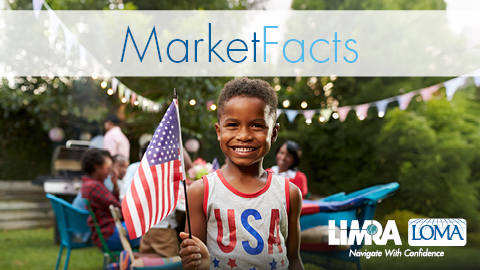Young Consumers: ‘Make it Easy to Learn and Easier to Buy’

Young Consumers: ‘Make it Easy to Learn and Easier to Buy’


July 2025
Today’s young consumers operate in a slightly different landscape than previous generations. Major life milestones are delayed, social media dominates American culture, and the very way consumers’ research life insurance has evolved. To better understand what today’s young consumers find most important when interacting with life insurance companies, LIMRA convened a panel of young adults aged 24 to 35.
Over three days in December 2024, participants shared their thoughts and feelings about purchasing individual life products and offered advice on how life insurance companies can better serve them.
Half of the panel already owns life insurance, while the other half expressed interest in obtaining coverage. The following main themes emerged from their responses about how the industry could better serve them.
The most common advice offered by participants is to be transparent and honest — being upfront about costs, avoiding hidden or hard-to-find information, and clearly explaining the differences between policy types. Transparency can build trust with prospective consumers, creating opportunities during both the research and purchase processes. Young Americans want information that is easy to understand, free of jargon, and accompanied by a simplified purchasing experience.
“I would tell life insurance companies to be more transparent about upfront costs. I would also tell them to offer personalized recommendations based on what plan is more suitable for the individual's needs versus offering the most expensive plans.” — Imanii, owner, age 25
Trust and authenticity are especially important to this demographic. They want the industry to build trust by being authentic and relatable, putting customers first, and having genuine interactions. These attributes should be prioritized in all communications, whether speaking with an agent or viewing content on social media.
“Maybe humanize the people that work for you. Like make it easy to see who their staff or insurance agents are — so they feel like regular people and not just a big bureaucracy. I think that increases the trustworthiness to like we are willing to share with you who we are.” — Ashley, non-owner, age 34
Sharing real-life experiences of existing customers can also help build trust with insurers, as well as increase awareness of the need for coverage.
“It makes me feel better hearing other people are in similar situations as me, so sharing real-life examples would be advantageous.” — Bailey, non-owner, age 26
Young people want life insurance companies to adopt a customer-centric approach — one that prioritizes their needs and interests, offers personalized recommendations and focuses on long-term relationships. Increasing communication around how insurance carriers already do this could further attract young people. As we know, the industry already takes a customer-centric approach; however, young people in our study may not be aware of these efforts. It’s in the industry’s best interest to increase messaging around its existing customer-centric initiatives to better reach young Americans.
“My advice to life insurance companies would be to focus on simplicity, transparency, and personalization. Make the process easier to understand, and by offering clear explanations and avoiding jargon, especially when explaining policy terms and pricing. Personalize the experience by providing tailored coverage recommendations based on individual needs, life stage, and budget. Finally, prioritize building trust through honest, informative content and a focus on long-term customer relationships rather than just make a sale.” — Patrick, owner, age 32
They seek more accessible educational materials in various formats, making information easy to access and relatable. Social media is a place where they regularly spend time and, when asked, say they would turn to it to learn more about life insurance. They advise insurance companies to use modern marketing strategies and engage with potential customers through relatable content. Leveraging video platforms like YouTube and TikTok can help inform young consumers in the way they prefer to learn. This enables them to learn new things about products as they continue their research and work with external support, such as parents or financial professionals.
“I think, providing plenty of educational materials … , such as podcasts and YouTube videos might be really beneficial for someone like me. I like to learn in many different formats, but listening is one of the easiest ways. I can pop in a podcast on my way to work, and it would be helpful.” — Gab, non-owner, age 28
Young consumers desire affordable plans, different payment options, and innovative policy types. Some of those who do not currently own a policy mentioned that affordability was such a barrier that, although coverage is something they would like to have, it’s just not feasible at the moment due to other expenses that take priority.
A majority of non-owners believe that paying $50 or more per month for life insurance is too expensive, indicating that paying less than $50 could be within a more acceptable range. Some non-owners in this study shared that they expect life insurance costs to be comparable to automobile insurance premiums, indicating the need for life insurance companies to increase messaging around the cost of coverage for this age range. For those who are financially ready to buy, a straightforward purchase process is crucial.
When it comes to meeting the perceived coverage needs for young consumers, it is clear that increasing both trust and knowledge is essential. Young consumers recognize that they lack knowledge about life insurance, but don’t know where to find trustworthy information to help them understand what might be beneficial to their needs.
Some don’t have the financial stability to buy insurance now — as they are struggling to manage their existing expenses — while others aren’t sure if it’s right for them. Perceptions around cost can be better addressed via messaging from life insurance companies, reducing misconceptions around perceived barriers.
Carriers can leverage their existing relationships with clients who are parents of young prospective consumers by positioning them as a resource for when their children are ready to buy. Lack of knowledge among young consumers can be addressed through social media, since this demographic says they would use it to learn about life insurance. Ultimately, when young consumers reach life events that prompt them to start thinking about life insurance, they need information tailored to their specific emotions and needs.

July 2025 Subscribe
AI Group Launches AI Risk Classification (AIRC) Model
AI and the Future: The Critical Role of Quality Assurance
Spotlight on Ann McGarry, CMO at Securian Financial
Navigating Disruption With Courageous Leadership
The Next Horizon: Adapting to Changing Workforce Benefits
Plan Sponsors Confused About Fiduciary Responsibilities
DC Plans Risk Stress Test: Can Providers Keep up?
Young Consumers: ‘Make it Easy to Learn and Easier to Buy’